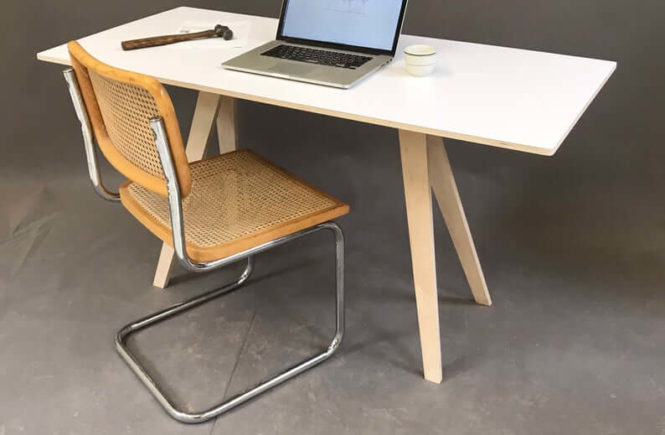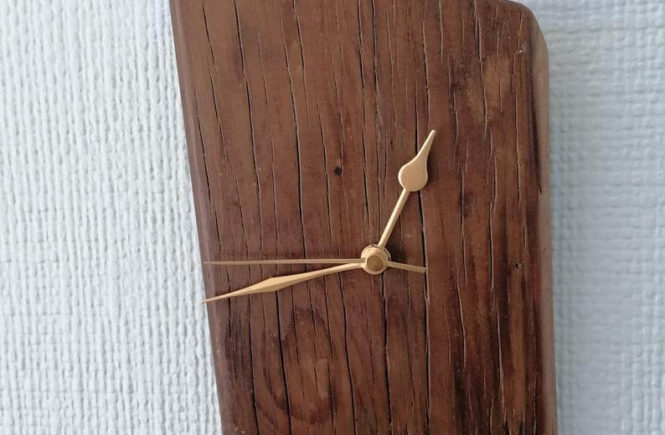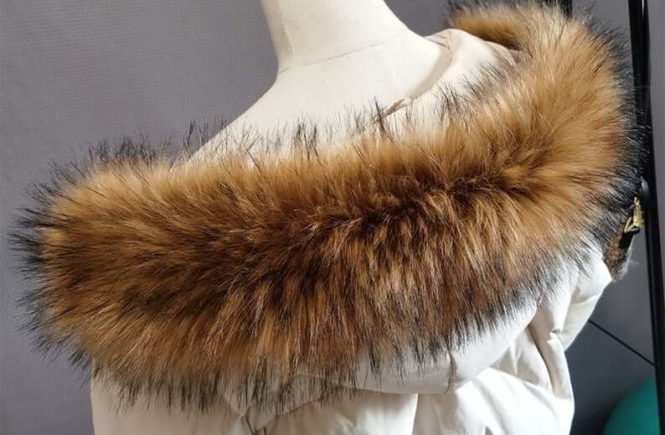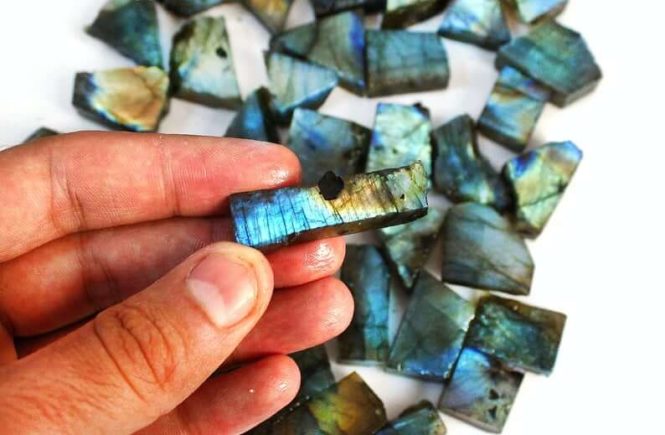[vc_row][vc_column][vc_message]
Niche : Home and Living
Shop link : https://www.etsy.com/shop/LeetesIslandWoodwork
Website : https://leetesislandwoodworks.com
[/vc_message][/vc_column][/vc_row][vc_row][vc_column][vc_column_text]
Tell us something about yourself, how did you get started, do you consider yourself a crafter, maker, artist…
We are two: Ken Field and myself, Louis Mackall. Ken’s the gearhead/woodworker, I’m the Architect. We’ve been together since 1976; I’ve been an Architect since 1970 practicing in Connecticut and New York. Our shop (formerly Breakfast Woodworks and now Leetes Island Woodworks) has been in existence since 1970. I’m 79; Ken is 68. This year we decided to make furniture. Surprisingly, it’s going very well.
How did you discover Etsy? Did you have any previous experience in selling handmade products? Why did you start selling online?
We discovered Etsy through a close friend who’d been selling there for years. We started at the beginning of 2020.
What products do you sell, what type of materials are used in your creations, how do you design your products, what makes your products stand out?
At first, our product was the humble sawhorse: several sizes and heights. I designed this 50 years ago and have used it ever since. Last year, Ken decided to engineer the joint so that it could be shipped knocked down, and easily assembled without glue. At the end of April, a friend asked for a modification so that it could be used as a small table. I sketched something, Ken made it, and at the beginning of May that went up on Etsy alongside the horses.
How was your experience in learning to craft, are you self-taught or did you have a mentor, how long did it take for you to be satisfied with your creations?
The short answer: we are never satisfied with our creations. They are ever-evolving. Between us, Ken and I’ve been making things for over 100 years. Our shop on the shoreline in Guilford is 10,000 sq. ft. Our tools run the gamut from Sloyd knives and water stones to a 5 axis CNC with a 5′ x 22′ bed. Oh, and computers.
What was your original goal when you opened up an Etsy shop? What impacted your decision to start selling online? Do you consider online selling as a side-job, full-time job, or extra income to pay for your hobby?
Our goal opening our Etsy shop LeetesIslandWoodwork was simply to sell sawhorses and furniture. After half a century making expensive and one-off houses, apartments, cabinets and furniture, we decided to work the other end of the economy: our horses and tables/desks are very affordable. Now, online selling is a full-time job for both of us.
Did you have any fears or reservations before opening up your Etsy shop? Were you worried about profitability or product competitiveness? What are some concerns and questions you had before you got started? How did you overcome them?
There were no fears opening our shop. Surprisingly, it has done very very well. It did take a few months to gain traction, but since May, month over month sales have been doubling up until our first burp in early August. It was then that the spindle on our CNC machine broke. It took us a month to get it fixed. Meanwhile, production and sales came to a dead stop.
How long did it take for you to get your first sale? Did you ever think you would make a lot of sales in the first year? What was the goal you were hoping for? How many sales an average you get per week?
We did not have sales goals. We knew that our sawhorse was an excellent product because we had refined its design in our own shop for over 50 years. We figured that over time, sales would grow: it was true, useful, beautiful, very light, and very strong. We enjoyed making it and enjoyed sharing its clever nature. It was our way of conversing with the world – our sanity if you will. The desk or table occurred as an accident – an actual conversation with a sawhorse customer who wanted a bit of flat on our horse to hold his pencil, square, etc.
Do you have a job outside Etsy? If not, are you able to commit full-time to online selling? How does your typical day look like? How do you manage time?
Ken and I – particularly I – are old. We’ve had very productive lives as Makers. Our tools are pencils, computers, and machines – both simple and complex. They were paid a long time ago. We are the lucky ones in work for our lives and work are one. LeetesIslandWoodwork has grown quickly. By Christmas, we will be selling as much as he and I can produce.
How does your manufacturing process look like for e.g. your best selling product? Do you create products ahead of the orders? Do you customize your products, if so how? What are the tools that you are using in the manufacturing process?
Besides computers, our most indispensable tool is our 5 Axis CNC. We’ve typically produced just ahead of the sale, but are now looking to build up a stockpile to avoid a crunch when shop repairs are needed. We do customize on occasion.
What is the biggest impact on the profitability of your shop? How expensive are the materials you use? How do you price your products?
Right now, profitability is primarily a function of volume. We are working to get volume up. Our materials are not expensive; our products – particularly the desks/tables – are priced below the competition.
What inspires you when you’re creating? How do you get ideas for new products? What are some methods or tools you use to get creative?
The ideas are endless: they simply float in. The trick is finding time to make prototypes. It is just Ken and myself – we have no employees.
[/vc_column_text][/vc_column][/vc_row][vc_row][vc_column width=”1/3″][vc_single_image image=”100002177″ img_size=”737×737″ onclick=”link_image” css_animation=”appear” bb_tab_container=””][/vc_column][vc_column width=”1/3″][vc_single_image image=”100002176″ img_size=”737×737″ onclick=”link_image” css_animation=”appear” bb_tab_container=””][/vc_column][vc_column width=”1/3″][vc_single_image image=”100002175″ img_size=”737×737″ onclick=”link_image” css_animation=”appear” bb_tab_container=””][/vc_column][/vc_row][vc_row][vc_column][vc_column_text]
Do you ship your product internationally? How do you handle postage pricing? What is the average time it takes from the order to the delivery? Do you use free shipping? If so, why? How do you package your products?
We do not ship internationally. Not sure why. We ship via UPS ’cause our stuff does sometimes get snagged in some USPS depots, particularly Springfield, MA. But we are considering FedEx and also DHL. We don’t offer free shipping ’cause our stuff weighs between 12 and 27 pounds: the shipping cost varies a lot between the East and West coast. We make our own crates.
Are you worried about competitors? Does it impact your business in any way? If there are a lot of similar products, how do you make your own stand out?
Honestly, we don’t have much competition because our products are extremely well-engineered and unlikely; unlikely because they have evolved through experience. If one were making a table, one would not first make a sawhorse and then put a table on top. But it turns out that this combination has a lot going for it. It stands out because of the following list:
1. It is affordable
2. It is very light.
3. It is beautiful
4. It solves a pressing need
5. It ships flat.
6. It is easy to assemble.
7. It is “The Furniture of Now”
8. It is protected under a patent-pending and copyright.
How do you deal with disputes or bad ratings/feedback? How do you manage presale and post-sale communication and customer satisfaction?
We have very very few bad ratings. Our present scale allows me to communicate personally with – every – customer. If people are unhappy, I’m happy to give them their money back.
Has selling on Etsy changed your life in any way? If so, how? Did you ever think you would get this far with your shop? Have you ever been stressed about dealing with customers and manufacturing products? How did you deal with that?
Selling through Etsy is a life changer. I’ve been skeptical from time to time but the fact is Etsy people have been very nice to us and it appears we can sell as much on Etsy as we care to make. Our problem will soon be how to meet demand. As for stress – yes, that’s an issue. I – hate – screwing up. I feel bad and guilty when I (we) do. At 79, I can’t remember where I put my phone three minutes ago, and Ken has the same issues. Within each screw-up lies that little voice saying – “hey, buddy, maybe it’s over . . . time to pack it in.”
How important is social media for your shop? What are some common tactics you use to promote your products? Do you spend money on ads outside of Etsy? How do you generate excitement/hype around your products?
I’ve no idea – really – how to promote our products. I dabble on Instagram and Facebook, but it’s pretty lame. But – and this is a big “but” – I don’t think promoting our product is a real issue anymore. Until our machine broke down, sales were doubling month over month. Now that it’s back up, I expect that slope to continue and believe it will. In the simplest terms, our products are – “True Things”: they stand on their own.
What are some things you don’t like about Etsy? If you could talk to the CEO of Etsy what recommendations would you tell him to improve sellers and customer satisfaction?
I am amazed at what Etsy does, and the systems they’ve worked out. I don’t know enough to be a critic, but for minor things such as more shipping options, and graphics closer to what the Swiss did in the ’50s and ’60s. It’s a bit folksy for my taste.
What are some things you did to set your shop for success on Etsy? What is one lesson you learned the hard way?
On the positive – we put out things which we believed in 100 percent. We could say that our sawhorses were the very best sawhorses made in the world. They had been copied by other shops in our part of Connecticut for 50 years, and we had used them for 50 years. As for the Desks / Tables, they are the “Furniture of Now” ’cause of that list of attributes I wrote above. As for the hard lesson: simple – get a back-up spindle for our CNC machine so we’re not down a full month next time it breaks.
What piece of advice would you give to new or established sellers or those considering selling on Etsy? How can they avoid beginner mistakes?
That’s a tricky question. I think it comes down to “belief”. You should “believe” in what you’re making. This means that you should believe in yourself. But that’s pretty heavy. It could also be that you simply give it a try. That’s pretty simple. Who knows, maybe it will work. And being self-employed is the best way to go. Etsy makes that pretty easy.
Anything you wish to add, feel free to do so here. We value your opinion
I’m writing this on 14 September. Our shop on Etsy is down for another day or two while we ramp production back up. The best way to see what we are doing today and tomorrow is by looking at the reviews, and their photos. I’m happy to answer more questions or burrow deeper into the ones I have answered. You can also call me at 203 415 6988
[/vc_column_text][/vc_column][/vc_row]




